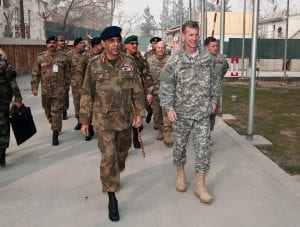Volume XXXVII – Number 1
Joseph Fahey
Abstract: US-Pakistani relations since the recognition of Pakistan in 1947 has included numerous ups and downs but has survived the Cold War and the subsequent years thereafter still remarkably intact. This piece follows the historical development of US-Pakistani relations from 1947 to the present, with heavy emphasis on the presidencies of Bill Clinton and George W. Bush, to highlight the evolution of this relationship. At its recognition, Pakistan had been seen as a crucial US ally in countering the USSR due to its location in South Asia, prompting the US to spend millions of dollars on development programs in the South Asian country. The state of relations changed drastically when Pakistan began to pursue nuclearizing in competition with its neighbor, India. Relations deteriorated with Pakistan’s refusal to abandon nuclear proliferation, with the US removing nearly all forms of aid and implementing sanctions, thus putting Pakistan in an economic stranglehold. This approach continued into the 1990s following the military coup that placed General Musharraf into power However, the relationship has fundamentally changed again after the attacks of September 11th, when the Bush administration pursued a new approach to court the Musharraf government in fighting Al-Qaeda and locating Osama bin Laden. This article follows the rollercoaster that is US-Pakistani relations from the beginning to its current state, coming to the conclusion that the only consistent aspect of the relationship is that it is consistently subject to change.
Keywords: Pakistan, United States, Nuclear Nonproliferation, South Asia, Terrorism, Taliban




You must be logged in to post a comment.